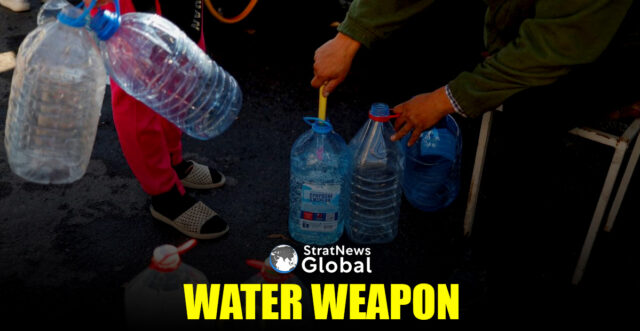The centralised water supply in Russian-occupied south-eastern Ukraine has collapsed, leaving nearly two million residents of the Donetsk region facing severe shortages.
While water access has been a problem since the conflict began in 2014, reports say the crisis has sharply worsened in recent weeks.
Residents now receive running water for only two to four hours every three days, and even then, the supply is described as unhygienic and “disgusting.” Many are forced to rely on water delivery trucks or buy bottled water sold under Russian authority at high prices. Videos have surfaced of children appealing directly to Russian President Vladimir Putin for help.
The shortages affect all sections of society, with people—including the elderly and disabled—compelled to carry water up to higher floors of residential buildings where the supply does not reach.
Kyiv maintains that Russia bears responsibility, pointing out that the shortages stem from damage caused during the war, first in 2014 and again in 2022, when river systems became battlegrounds. Ukraine also stresses that since Russia’s occupation of Donetsk is illegal under international law, Moscow is obliged to provide for the population.
Moscow, however, has rejected blame and accused Ukraine of blocking water and neglecting infrastructure maintenance. Russian authorities inside Donetsk have echoed this narrative, with Kremlin-backed leader Denis Pushilin previously suggesting the problem could only be solved by “liberating” the city of Slavyansk in the north of the region.
Reports also indicate that pro-Russian online networks are exploiting the crisis to spread propaganda, portraying Moscow as a provider of aid while undermining Ukraine. Observers note that such narratives may complicate any future peace talks, as Russia leverages a basic human necessity to consolidate its hold on the territory.
(This article was written by Tisya Sharma, she is an intern at StratNews Global)





